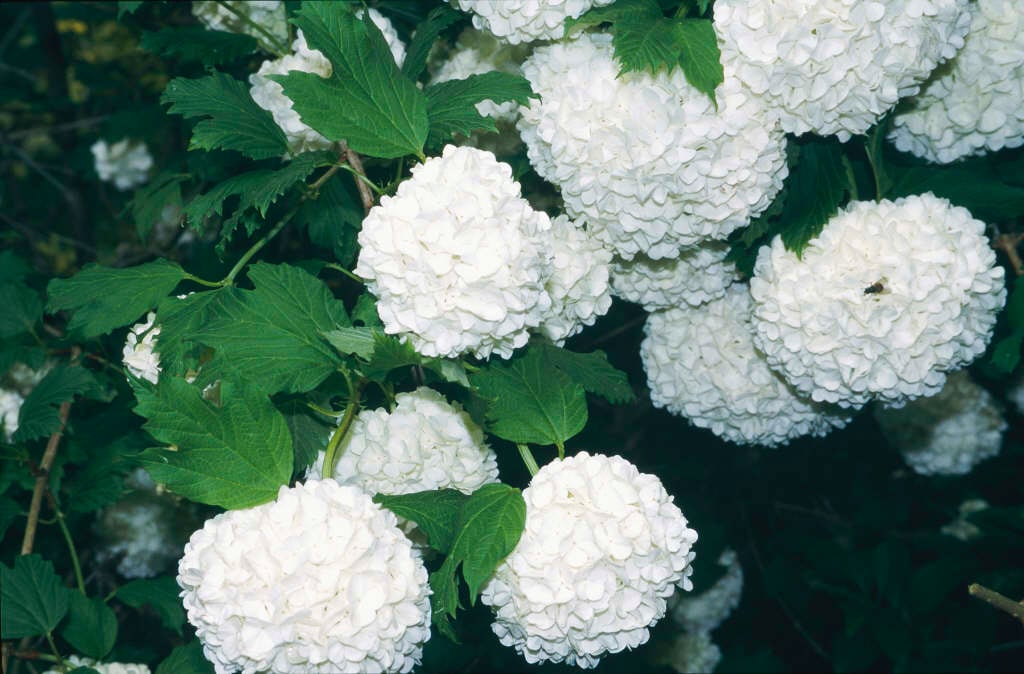Viburnum opulus 'Roseum'
red guelder rose
A very popular, large, bushy deciduous shrub to about 3m in height, with dark green lobed leaves tinted purplish-red in autumn. Abundant, greenish-white or white sterile flowers in dense rounded clusters to 6cm across, occasionally maturing to pink, are produced in late spring or early summer; the flowers are sterile so no fruit is produced
Synonyms
Viburnum opulus 'Sterile'Size
Ultimate height
2.5–4 metresTime to ultimate height
5–10 yearsUltimate spread
2.5–4 metresGrowing conditions
Moisture
Moist but well–drained, Well–drainedpH
Acid, Alkaline, NeutralColour & scent
| Stem | Flower | Foliage | Fruit | |
| Spring | White | Green | ||
|---|---|---|---|---|
| Summer | White | Green | ||
| Autumn | Red Orange Yellow | |||
| Winter |
Position
- Full sun
- Partial shade
Aspect
North–facing or South–facing or West–facing or East–facing
Exposure
Exposed or Sheltered Hardiness
H6Botanical details
- Family
- Viburnaceae
- Native to GB / Ireland
- No
- Foliage
- Deciduous
- Habit
- Bushy
- Genus
Viburnum can be deciduous or evergreen shrubs with opposite, simple or palmately lobed leaves and clusters of small, often fragrant white or pink flowers, followed by red, blue or black berries
- Name status
Accepted
How to grow
Cultivation
Grow in moderately fertile, humus-rich, moist but well-drained soil in sun or part shade. See viburnum cultivation for further advice
Propagation
Propagate by softwood cuttings in summer
Suggested planting locations and garden types
- City and courtyard gardens
- Coastal
- Cottage and informal garden
- Wildlife gardens
- Cut flowers
- Flower borders and beds
- Hedging and screens
Pruning
Pruning group 1. Tolerates hard renovative pruning
Pests
May be susceptible to aphids and viburnum beetle
Diseases
May be susceptible to Phytophthora, honey fungus, grey moulds and leaf spot
Get involved
The Royal Horticultural Society is the UK’s leading gardening charity. We aim to enrich everyone’s life through plants, and make the UK a greener and more beautiful place.
